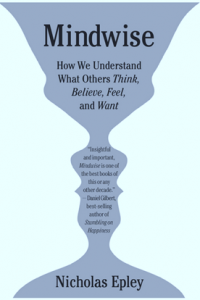Good Designers Read Your Mind – But How?
Sunday, April 13th, 2014 In cognitive design we spend a lot of time trying to understand what people are really thinking and feeling. We need to understand their mental models, cognitive biases and emotional states so that we can design products and services that meet deeply felt psychological needs. So I am always on the lookout for new scientific insights into how to read others peoples’ minds.
In cognitive design we spend a lot of time trying to understand what people are really thinking and feeling. We need to understand their mental models, cognitive biases and emotional states so that we can design products and services that meet deeply felt psychological needs. So I am always on the lookout for new scientific insights into how to read others peoples’ minds.
For example, the new book, Mindwise How we Decide What Others Think, Feel and Want, challenges some commonly held assumptions. More specifically, the author argues that popular techniques of reading gestures or body language and trying to put yourself in the other person’s shoes (imagine their situation) are not useful. Indeed, he argues that we are wildly over confident in our belief that we can know what other people are thinking and feeling.
While the book does not present an alternative for effective reading other minds, it will help you avoid some common pitfalls and provides justification for using the more scientific approaches (e.g. metaphor elicitation and protocol analysis) that we write about in the Cognitive Design Blog.